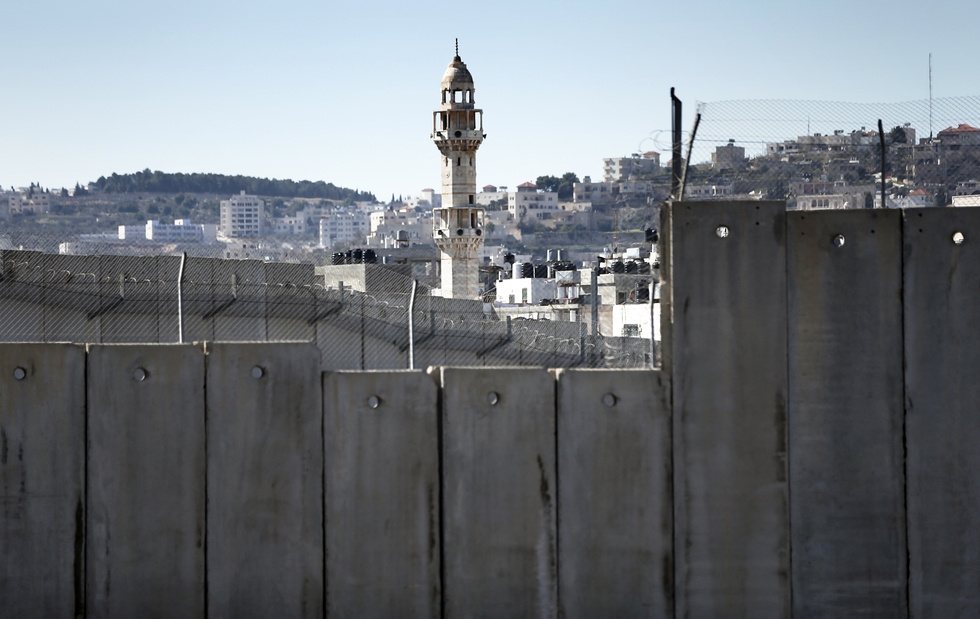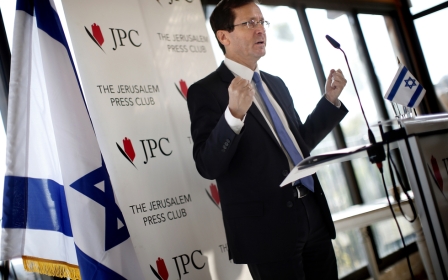Israelis can't move past their wall mentality

You know how it’s supposed to take a village to raise a child? It seems that, in the eyes of the current Israeli government, it takes a Palestinian village to raise a deadly attacker. Or that, at least, is one interpretation for Israel’s decision to put entire villages in the occupied West Bank under security lockdown.
This measure has been imposed twice in the past few weeks, in response to attacks on Israelis. Last week, Nahalin village was locked down as the Israeli army searched for the Palestinian man suspected of stabbing a 20-year-old man from a nearby Jewish settlement. The week before, the 25,000 citizens of Qatabiya, in the northern West Bank, were blockaded after three Palestinian teens from the village killed an Israeli police officer – all three attackers were shot dead at the scene.
In January, Ramallah was placed under partial lockdown, in a move, Israel said, to prevent further attacks in Jerusalem.
These military measures – not deployed since the second Palestinian intifada – all come in the context of a renewed wave of violence in the region: 165 Palestinian and 26 Israel lives have been claimed since October.
From a security perspective – as various Israeli security officials have also noted – these measures are often counter-productive, because they are inevitably viewed as collective punishment: what does an entire village have to do with the actions of one attacker? Why should an entire population be blockaded in response to acts of violence that they had nothing to do with? And how could the frustration, suffocation and humiliation inflicted by such measures do anything other than sow hostility and hate?
And the trouble with solutions premised on barriers and fences is that they aren’t actually solutions: in a conflict about land, resources and freedom from occupation, people will always find a way to get around – or under – walls.
Meanwhile, in response to the conflicts ravaging countries across Israel’s borders, Prime Minister Binyamin Netanyahu recently said he wants to “surround all of Israel with a fence” to protect the country from what he described as the “wild beasts” surrounding it.
And in that statement is a glimmer of the propelling rationale behind Israel’s policies of borders and blockades. Because right from the start, the impulse has been to seal off, rather than to engage with the neighbourhood, viewed by Israel’s European founders as alien, dirty and uncivilised long before it became actively hostile. It’s a view best summarised by former Israeli prime minister, Ehud Barak, who described the country as a “villa in the jungle”.
It’s not a sentiment that’s unique to Israel, of course: it is there underpinning much of Europe’s current hysteria over the refugee crisis; the terror tropes over Muslim “hordes” “swamping” nice European countries with backward religious practices and innate violence. When Netanyahu talks of his Arab neighbours as “wild beasts” he is in some sense both borrowing from and bolstering the current European narrative.
But in the Israeli context, the preference to seal off carries the added logic of a frontier state. And the barricades are all too often invisible – separating and dividing Jewish and non-Jewish societies inside Israel.
It’s there in the constant, practically unconscious sifting and sorting that goes on at every level of Israeli society: are you one of us, or one of them? Do you have the wrong accent? Do you look like the enemy? Does your dress sense, car, identity card or neighbourhood coordinates give you away?
And of course, there are the obvious borders – the barriers, the blockades, the walls and watchtowers and razor wire that are so emblematic of the Israeli occupation, but which at the same time define Israel’s rationale. That’s something that the Israeli architect and intellectual Eyal Weizman nailed down in his writing: how the operational premises of Israel’s policies are both defined by and encoded within the physical bricks and barricades of the occupation. The guiding political sentiments are a seamless part of the structures, so that the policies of control are simultaneously enacted by and defined by the physical landscape.
But the trouble with such barrier policies is not just the choking effect they have on the people they attempt to contain: because by shutting other people out, you also end up sealing yourself in. And sealed-in cultures get stunted and small, because it’s precisely the exposure to difference that allows for growth and development.
So what do you end up with? Responding to Netanyahu’s fence-building statement, Asher Schechter, columnist for Israel’s left-leaning newspaper Haaretz, described the result as: “a shtetl with an air force and German submarines”.
Which cannot be an outcome that anybody wanted, or strived for.
- Rachel Shabi has written extensively on the Israeli-Palestinian conflict and the Middle East and is the author of the award-winning book, Not the Enemy: Israel's Jews from Arab Lands
The views expressed in this article belong to the author and do not necessarily reflect the editorial policy of Middle East Eye.
Photo: Israel's controversial separation barrier dividing Jerusalem and the West Bank town of Bethlehem, on 12 February, 2016 (AFP).
New MEE newsletter: Jerusalem Dispatch
Sign up to get the latest insights and analysis on Israel-Palestine, alongside Turkey Unpacked and other MEE newsletters
Middle East Eye delivers independent and unrivalled coverage and analysis of the Middle East, North Africa and beyond. To learn more about republishing this content and the associated fees, please fill out this form. More about MEE can be found here.





